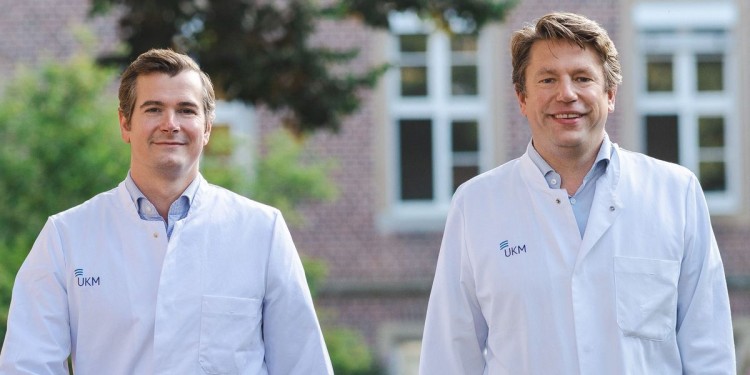
Surviving ‘butterfly disease’
The skin is the largest organ of the human body. But what if the skin “disintegrates” at just the slightest touch? This is exactly what happens with Epidermolysis bullosa (EB), sometimes also known by the name ‘butterfly disease’. This skin disease is based on genetic defects and, because there is no cure, it can be fatal, often even in young patients. But there is hope: in 2015, a team of therapists from Germany and Italy were the first to be able to save a patient whose skin surface was 80 percent destroyed.
Whether the treatment would be successful in the long term – and the skin remain stable – was not clear at the time. Plastic surgeons Dr. Maximilian Kückelhaus and Prof. Tobias Hirsch from the University of Münster applied themselves to this question – and, together with the colleagues in their team – were able to verify the long-term success of this experimental treatment. The results of the study have now been published in the prestigious journal The New England Journal of Medicine.
In the case of EB, patients suffer from a mutation of the genes responsible for the skin’s proper structure. Even the slightest touch results in blisters and open wounds. So far, the disease has been considered to be incurable, but the doctors treating the seven-year-old boy have apparently proved the opposite – at least, in this one individual case. They opted for an experimental method of treatment which had never before been performed on humans in this form: they transplanted on to the wound areas around one square metre of skin which had previously been cultured in the laboratory from genetically modified stem cells. For this purpose, they modified the diseased stem cells in the boy’s skin by infiltrating genetic information. The aim was for this genetic modification to compensate for the mutations in those genes responsible for the cellular structure of the skin. In other words, the researchers infiltrated a healthy version of the defective gene. The treatment was successful, and the boy survived.
Today the boy is 13 years old and is the only person worldwide living with an organ replaced almost completely by genetically modified cells – which is why it is all the more important to check the long-term effects and ensure that the transplanted skin remains stable. What Kückelhaus and Hirsch proved with their study, which ran for five years, was that genetically modified skin is of a very good quality and one hundred percent stable. At the same time, the team of researchers found no side-effects at all from the transplant.
The plastic surgeons, who carry out research at the University of Münster (Institute of Musculoskeletal Medicine) and practice at the specialist clinic in Hornheide/Münster and at Münster University Hospital, are very pleased that further studies will be following on from their own. “After this positive, promising result,” says Prof. Hirsch, looking into the future, “broad-based clinical studies are to be undertaken with the aim of making the combined gene and stem-cell therapy available as an option for many children with EB.”
Original publication
Kueckelhaus, M., et al. Transgenic Epidermal Cultures for Junctional Epidermolysis Bullosa — 5-Year Outcomes. N Engl J Med 2021; 385:2264-2270. DOI: 10.1056/NEJMoa2108544
